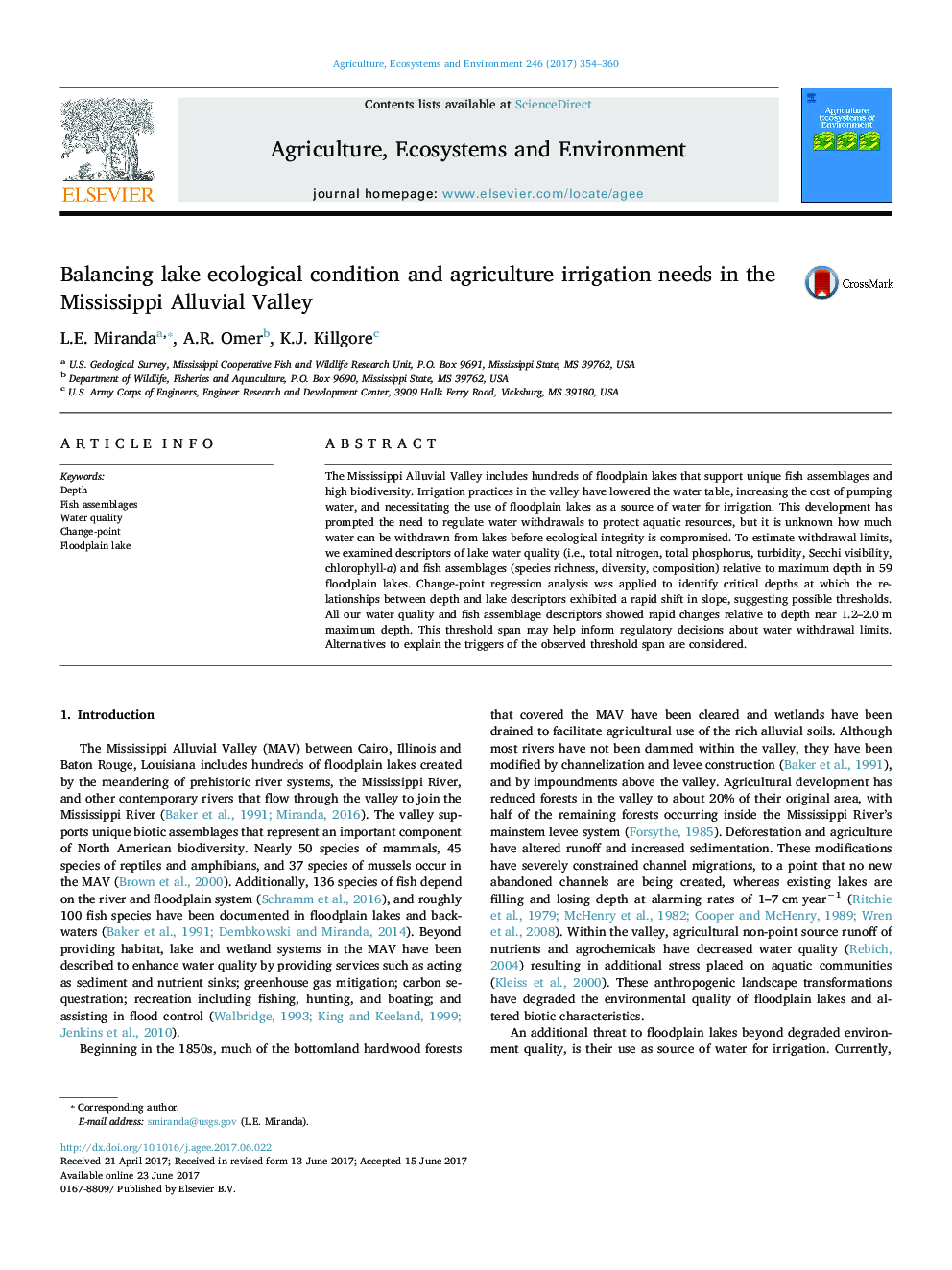| Article ID | Journal | Published Year | Pages | File Type |
|---|---|---|---|---|
| 5538057 | Agriculture, Ecosystems & Environment | 2017 | 7 Pages |
Abstract
The Mississippi Alluvial Valley includes hundreds of floodplain lakes that support unique fish assemblages and high biodiversity. Irrigation practices in the valley have lowered the water table, increasing the cost of pumping water, and necessitating the use of floodplain lakes as a source of water for irrigation. This development has prompted the need to regulate water withdrawals to protect aquatic resources, but it is unknown how much water can be withdrawn from lakes before ecological integrity is compromised. To estimate withdrawal limits, we examined descriptors of lake water quality (i.e., total nitrogen, total phosphorus, turbidity, Secchi visibility, chlorophyll-a) and fish assemblages (species richness, diversity, composition) relative to maximum depth in 59 floodplain lakes. Change-point regression analysis was applied to identify critical depths at which the relationships between depth and lake descriptors exhibited a rapid shift in slope, suggesting possible thresholds. All our water quality and fish assemblage descriptors showed rapid changes relative to depth near 1.2-2.0Â m maximum depth. This threshold span may help inform regulatory decisions about water withdrawal limits. Alternatives to explain the triggers of the observed threshold span are considered.
Related Topics
Life Sciences
Agricultural and Biological Sciences
Agronomy and Crop Science
Authors
L.E. Miranda, A.R. Omer, K.J. Killgore,
